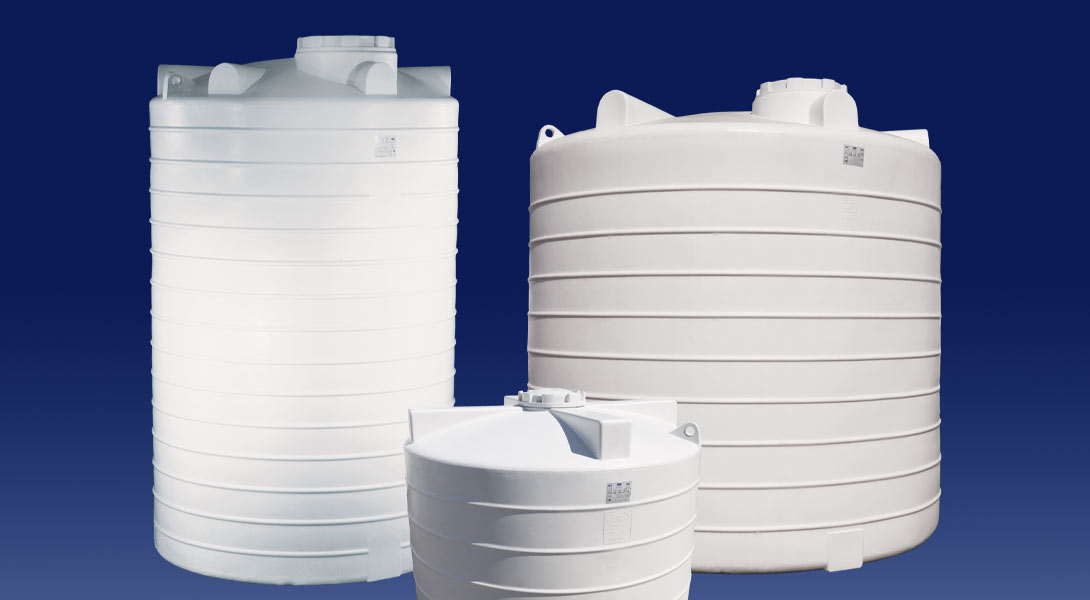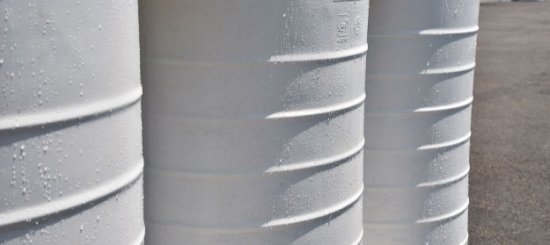Polyethylene tanks are the most widely used type of tanks, which are used to keep and store various liquids such as water. These tanks have become very popular among people due to the features such as high resistance to harmful UV rays, impact resistance, light weight, etc. These tanks are usually installed indoors against the direct sunlight due to these features and other things such as lack of space. One of the issues that worries the people, who want to buy polyethylene tanks in these circumstances, is the longevity and resistance of polyethylene tanks against cold and heat. Many things such as installation location, tank thickness, tank type, weather conditions, etc. have a great impact on the resistance of tanks against heat and cold. We seek to investigate the impact of cold and heat on the water supply and provide useful information regarding the lifespan of polyethylene tanks in this article.
Resistance of Polyethylene Tanks in the Cold
The possibility of water freezing increases in cold weather. Water freezing is an occurrence that people are afraid of because this can cause serious damage to the tank and pipes. Polyethylene tanks do not get damaged in itself at low temperatures. However, increasing the volume of water and other liquids inside the tank (if the tank is full) can cause cracks or deformation of the tanks. Of course, three- and four-layer polyethylene tanks are very strong in preventing the o temperature transmission from outside the tanks into them due to having thermal insulation (middle black layer). In addition to the high resistance of tanks in temperature transmission, one of the factors that prevent the water from freezing is the water circulation inside the tanks. water will not freeze at all if circulates in polyethylene tanks. One of the causes of water freezing in the cold is the low quality of some polyethylene tanks. Polyethylene tanks have two types. The first type of these tanks is produced from new and high-quality raw materials, and the second type is produced out of recycled ones. Using tanks made from recycled raw materials is not a good idea because the quality of these tanks is very low and they do not display good resistance against cold and heat.
However, if there are people, who are sensitive about their tanks protection or the liquids they keep in the tanks should not freeze at all, then they can use methods to prevent the tanks and their fittings from freezing. We have dealt with this issue in a separate article that you can study. Of course, if you are using a polyethylene tank for a shed or a factory, it is better to use funnel tanks instead of horizontal or vertical ones so that it can transfer water with a better pressure due to its base.

One of the issues that concern people's minds regarding the polyethylene tanks is the shelf life and resistance of polyethylene tanks against cold and heat. These polyethylene tanks are exposed to damage caused by weather and atmospheric conditions since they are installed indoors for the reasons such as lack of space. These circumstances create concerns for people but it should be noted that these tanks have high resistance to hot and cold temperatures. Furthermore, some types of polyethylene tanks, such as three-layer and four-layer tanks, are very suitable for keeping and storing different liquids due to their middle layer resistant to light penetration and temperature transmission from outside to inside.
Heat Resistance of Polyethylene Tanks
Continuing to investigate the resistance of polyethylene tanks in cold and heat, we should know that as the temperature increases, the mechanical resistance of polyethylene decreases. As we mentioned, three- and four-layer polyethylene tanks work very poorly in temperature transmission due to having a black middle layer, which has the task of preventing the light entry and temperature transmission. In other words, polyethylene tanks are very resistant to heat and their contents do not heat up easily. The transmission of air heat and temperature to the contents inside polyethylene tanks happens hard. In addition to the high resistance of polyethylene tanks, the temperature of the air and tanks decreases due to the sun setting (which is the main reason for the tanks heating). It is worth mentioning that it takes a lot of time to heat up the tanks and their contents, and the large volume of liquids in the tank goes through the heating process slowly. If you want to know how to keep the polyethylene tank cool in the hot seasons of the year, then please study the article on How to Keep the Water Tank Cool in the Hot Seasons of the Year. You can also refer to the price page of the funnel tank for information on the dimensions, how to place order, and information on the funnel tank price and quotation.
Besides this issue, there are various ways to prevent the sunlight from radiating the tanks and heating their contents. Among these ways, the following can be mentioned:
Installation of awnings for outdoor tanks
Installing tanks in dark and cool places
Use of thermal insulations
Use of white tanks
Continuing to investigate the resistance of polyethylene tanks in cold and heat, we must point out that polyethylene tanks also have a significant resistance to heat. Three-layer and four-layer types of polyethylene tanks are one of the best types of polyethylene tanks that can be safely installed in direct sunlight due to the middle layer resistant to light penetration and temperature transmission. Also, in order to prevent the sun from radiating the tanks and heating the contents inside them, you can use methods such as: installing shaders for tanks indoors, using thermal insulations, using white tanks, installing tanks in dark and cool places, etc.
Polyethylene Tanks Lifespan
In general, polyethylene tanks have a lifespan of about 15 to 20 years. But the main point in this regard is the storage conditions of these tanks. The better the maintenance of polyethylene tanks, the longer the lifespan of these tanks will be. Proper maintenance of polyethylene tanks makes the shelf life of these tanks more than 25 years. Using thermal insulations, installing tanks under the shader and away from direct sunlight, storing liquids proportionate to the tanks, using high-quality tanks produced from new raw materials, etc. are among the things that can cause an increase in the lifespan of polyethylene tanks. If you want to get acquainted with the types of polyethylene tanks, study the article on the list of dimensions, size, and weight of the polyethylene water tank.
Final Word
As we said in this article, many people, who are going to buy polyethylene tanks or are looking for information about these tanks, raise questions related to the longevity and resistance of polyethylene tanks against cold and heat. To answer these questions, we must point out that polyethylene tanks have a temperature range of +45 to -70 degrees Centigrade. In general, the heat and cold of the air are factors that can affect the lifespan of tanks. There are ways and methods, including installing a shader, using thermal insulation for tanks, using high-quality three-layer and four-layer tanks, using tanks produced from new raw materials, etc. to minimize the impacts of weather and sunlight.
Tabarestan Plastic Complex, the largest producer of polyethylene tanks
As mentioned, high-quality tanks produced from high-quality raw materials have a long lifespan. The best way to buy tanks with a long life and high quality is to refer to large and reliable producer complexes and companies. As one of the top producers of polyethylene tanks in Iran and the Middle East, Tabarestan Plastic Complex has always produced the highest quality products and offered them to our esteemed customers. You can contact our experts at Tabarestan Plastic Complex for more information. It is also possible to buy tanks produced in Tabarestan Plastic Complex by visiting the representatives of the complex.


 فارسی
فارسی English
English عربي
عربي کوردی
کوردی
User comments